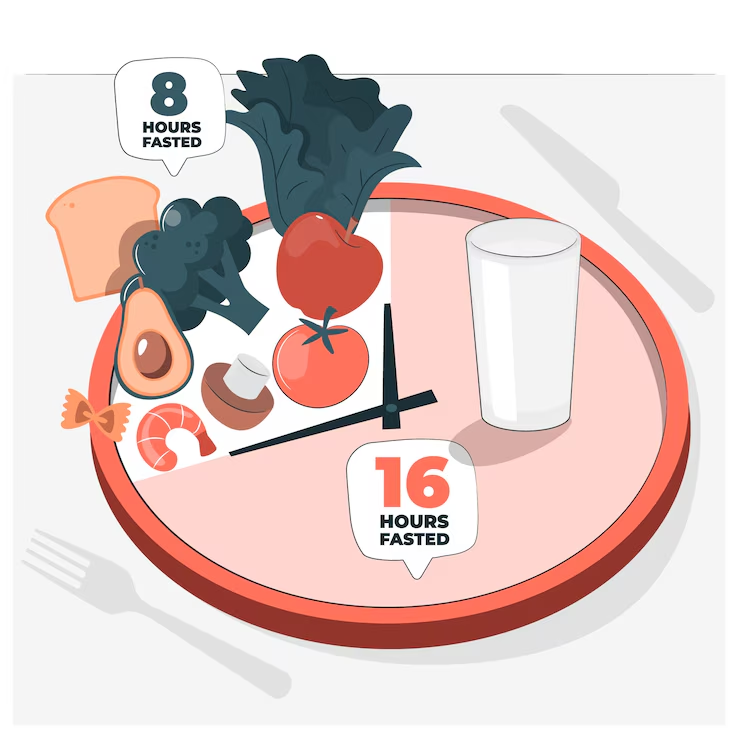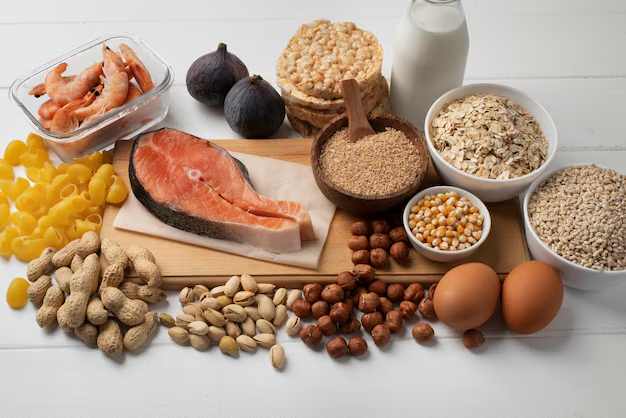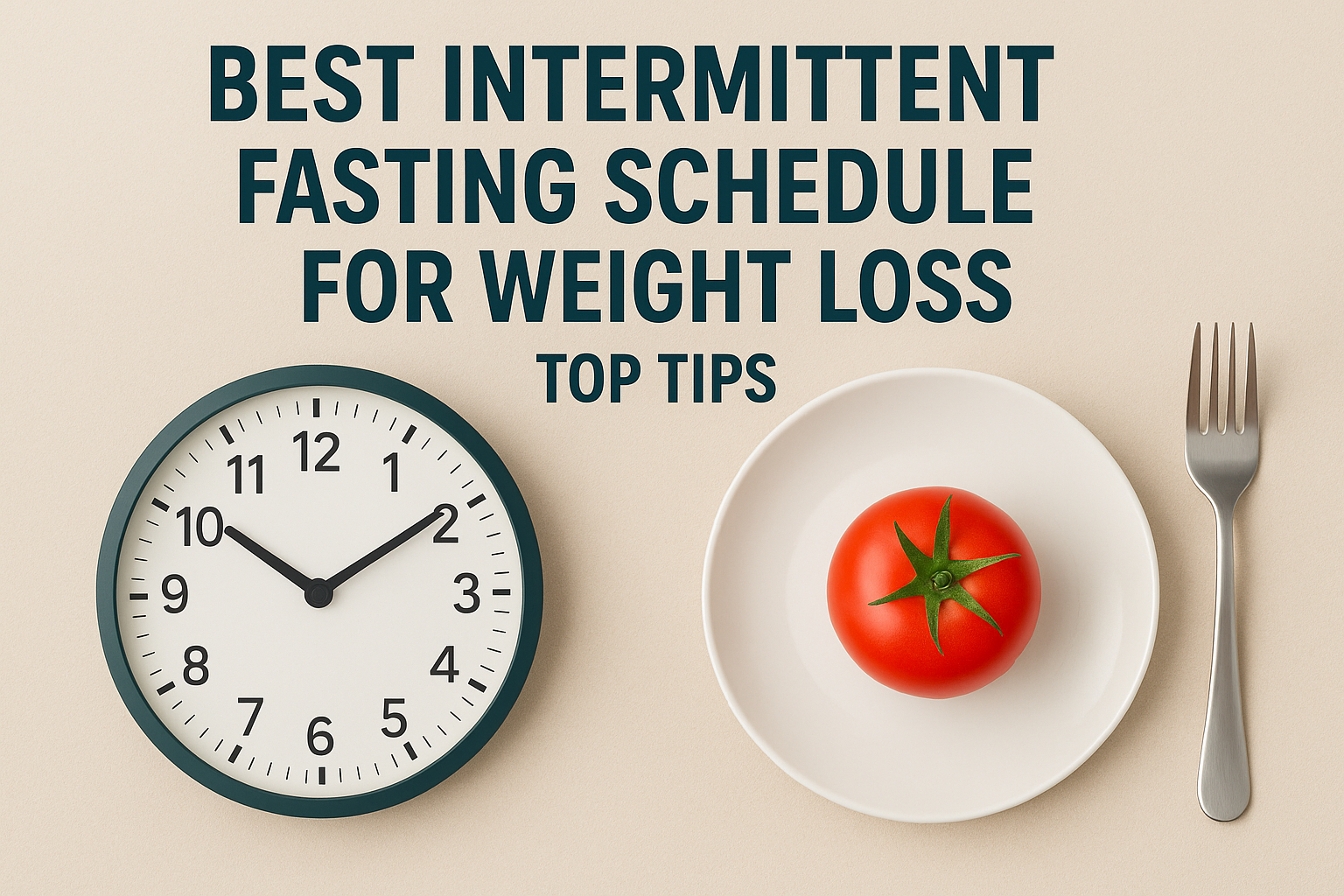In today’s health-conscious world, many people are turning to intermittent fasting (IF) as a natural and effective way to shed extra pounds. Backed by science, this eating pattern focuses on when you eat rather than what you eat, helping to reduce calorie intake and enhance fat-burning. The Best Intermittent Fasting Schedule for Weight Loss often depends on individual lifestyles, eating habits, and goals.
One of the most popular and beginner-friendly methods is the 16:8 schedule, where you fast for 16 hours and eat within an 8-hour window. This routine supports weight loss by allowing the body to burn stored fat while improving insulin sensitivity and digestion. Another effective option is the 5:2 plan, where you eat normally five days a week and restrict calories on the remaining two.
Choosing the Best Intermittent Fasting Schedule for Weight Loss involves listening to your body, staying consistent, and combining fasting with a balanced diet and regular exercise for optimal results.
This article dives deep into intermittent fasting, explores various fasting schedules, outlines the best plan for weight loss, and gives you 8 powerful tips to supercharge your progress.
What Is Intermittent Fasting?
Intermittent fasting isn’t about what you eat—it’s about when you eat. It’s a pattern that alternates between eating and fasting periods. Unlike traditional diets that cut calories or food groups, intermittent fasting focuses on timing, making it a sustainable lifestyle choice rather than a temporary fix.
Popular in recent years thanks to scientific studies and celebrity endorsements, intermittent fasting has proven benefits. It promotes weight loss, boosts fat burning, improves insulin sensitivity, reduces inflammation, supports brain health, and may enhance longevity. These advantages make it an appealing approach for many.
Choosing the Best Intermittent Fasting Schedule for Weight Loss depends on personal preference and lifestyle. The 16:8 method, where you fast for 16 hours and eat during an 8-hour window, is among the most effective and beginner-friendly options. Consistency, balanced nutrition, and hydration are key to success with any fasting routine.

How Intermittent Fasting Works for Weight Loss
When you eat, your body releases insulin to help absorb glucose from food and convert it into energy. This process is essential for fueling your body’s activities. However, when you consume more glucose than your body needs, the excess is stored as fat, leading to weight gain over time.
During fasting periods, your insulin levels naturally drop because no new food is being consumed. As a result, your body shifts from using glucose for energy to burning stored fat instead. This metabolic switch is what makes intermittent fasting such a powerful tool for fat loss and improved metabolic health.
The Best Intermittent Fasting Schedule for Weight Loss takes advantage of this fat-burning state by extending the fasting window, allowing your body to rely more on stored fat. Popular schedules like the 16:8 method or alternate-day fasting can help achieve this shift effectively.
To maximize benefits, it’s important to combine fasting with nutrient-rich meals during eating windows. Staying hydrated and maintaining a consistent routine also support long-term success. With the right approach, intermittent fasting can be a sustainable and healthy weight loss solution.
Here’s why IF works:
Caloric restriction: You naturally eat fewer calories due to limited eating windows.
Hormonal advantage: Reduced insulin and increased growth hormone promote fat burning.
Metabolic switch: Your body moves from burning sugar to burning fat (a state called ketosis).
Types of Intermittent Fasting Schedules
There are several IF schedules. The key is choosing one that suits your lifestyle and goals. Below are the most common and effective schedules for weight loss:
The 16/8 Method (Leangains Protocol): Fast for 16 hours and eat within an 8-hour window, such as 12 PM to 8 PM.
This is the most popular and beginner-friendly method, making it one of the Best Intermittent Fasting Schedules for Weight Loss due to its ease of adherence and long-term sustainability.
The 18/6 Method: Fast for 18 hours and eat within a 6-hour window.
Slightly more advanced than 16/8, this method enhances fat burning and supports deeper cellular repair through autophagy.
The 5:2 Diet: Eat normally for 5 days a week, and limit intake to 500–600 calories on two non-consecutive days.
Ideal for those who prefer flexibility while still achieving consistent results.
Alternate-Day Fasting (ADF): Fast every other day, with either complete fasting or very low-calorie intake (~500 kcal) on fasting days. Highly effective, though more challenging, and best suited for experienced fasters.
OMAD (One Meal a Day): Consume one large meal in a 1-hour window and fast for the remaining 23 hours.
This extreme method may be used short-term to break through plateaus.
Eat Stop Eat: Perform a full 24-hour fast once or twice per week.
Not for everyday use, but helpful for overcoming weight loss stalls and boosting discipline.
Which Intermittent Fasting Schedule Is Best for Weight Loss ?
Top Choice: 16/8 Intermittent Fasting
Among all the fasting styles, the 16/8 method stands out as the Best Intermittent Fasting Schedule for Weight Loss, especially for those seeking long-term, sustainable results. Here’s what makes it so effective:
Simple to follow: Skipping breakfast and starting your first meal at noon feels natural for many people.
Sustainable: It easily fits into most lifestyles without major disruptions.
Flexible: You can shift your eating window (e.g., 10 AM–6 PM or 1 PM–9 PM) based on your daily routine.

When combined with a balanced diet and regular exercise, many people experience consistent weight loss of about 0.5–1 kg (1–2 lbs) per week. Its ease, flexibility, and effectiveness make the 16/8 method the top contender for the Best Intermittent Fasting Schedule for Weight Loss.
Top 8 Tips for Successful Weight Loss with Intermittent Fasting
Start Slow and Gradually Increase Fasting Hours
Starting intermittent fasting can be challenging if you jump in too quickly. Avoid beginning with a strict 24-hour fast. Instead, start with a 12/12 schedule—fast for 12 hours and eat within the next 12. This gentle approach helps your body adapt gradually without overwhelming it.
Over time, you can shift to more effective fasting windows like 16/8 or 18/6. These schedules are widely considered the Best Intermittent Fasting Schedule for Weight Loss because they extend fat-burning periods while remaining manageable for most people. Gradual adjustment reduces hunger, fatigue, and mood swings.
Patience and consistency are key to success. Listen to your body, stay hydrated, and focus on nutrient-dense meals during your eating window. This step-by-step method makes intermittent fasting more sustainable, helping you stay committed for the long term while enjoying healthy, lasting weight loss.
How to do it:
Week 1: Start with a 12/12 schedule (e.g., fast from 8 PM to 8 AM).
Week 2: Transition to a 14/10 schedule.
Week 3+: Move up to 16/8 once your body adapts.
Bonus tip: Listen to your body. If you’re feeling too weak or lightheaded, it’s okay to shorten your fast and try again later.
Stay Hydrated

Staying hydrated is essential when following any intermittent fasting routine. During fasting hours, drink plenty of water to support metabolism and reduce feelings of hunger. Hydration also helps prevent fatigue and boosts energy throughout the day.
You can also enjoy herbal teas, black coffee, or sparkling water while fasting—these contain minimal to no calories and won’t break your fast. These beverages can make the fasting window easier to manage, especially when following the Best Intermittent Fasting Schedule for Weight Loss, like the 16/8 method.
A helpful tip: if you feel lightheaded or dizzy during fasting, add a pinch of sea salt to your water. This can help restore lost electrolytes and maintain balance. Proper hydration not only supports overall health but also enhances the fat-burning effects of your intermittent fasting routine.
How to do it:
Drink 2.5–3.5 liters (85–120 oz) of water daily.
Include electrolyte-rich fluids like herbal teas or mineral water.
Add a pinch of Himalayan pink salt or sea salt to water to replenish sodium and prevent dizziness.
Allowed drinks during fasting:
Water (still or sparkling)
Black coffee (no sugar or milk)
Herbal teas (no sweeteners)
Apple cider vinegar diluted in water (optional)
Eat Nutrient-Dense Foods During Your Eating Window
When following intermittent fasting, your eating window is limited, so it’s important to make every meal count. Choosing nutrient-dense foods helps fuel your body, support recovery, and maintain energy levels throughout the day. This becomes especially important when you’re eating just 1–2 meals daily.
Meals should include lean proteins, healthy fats, fiber-rich vegetables, and whole grains. These foods keep you full longer and stabilize blood sugar, which enhances fat-burning efficiency. Proper nutrition is a key part of the Best Intermittent Fasting Schedule for Weight Loss, ensuring your body runs smoothly even during fasting hours.
Skipping out on nutrients can lead to fatigue, cravings, and muscle loss. By focusing on quality over quantity, you’ll not only improve results but also make your fasting schedule more sustainable. Balanced, nourishing meals are the foundation of safe and effective intermittent fasting.

What to focus on:
Proteins: Chicken, eggs, tofu, Greek yogurt, fish, legumes.
Healthy fats: Avocados, olive oil, nuts, seeds, fatty fish.
Complex carbs: Quinoa, sweet potatoes, oats, brown rice.
Veggies: Leafy greens, broccoli, carrots, bell peppers, etc.
Meal timing idea:
First meal (post-fast): High in protein + moderate in fat and fiber.
Last meal: Balanced macros, avoid heavy carbs right before bedtime.
Avoid: Processed foods, refined sugars, fried foods, and soda—even during the eating window.
Don’t Overeat During Your Eating Window
A common misconception about intermittent fasting is that you can eat anything or as much as you want during your eating window. While fasting helps control when you eat, what and how much you eat still play a crucial role in achieving your goals.
Even with the Best Intermittent Fasting Schedule for Weight Loss, calories and food quality matter. Overeating or indulging in processed foods can slow your progress and even lead to weight gain. Your body still responds to total caloric intake and nutritional balance.
To get the best results, focus on whole foods like vegetables, lean proteins, healthy fats, and complex carbs. These provide the nutrients your body needs for energy and recovery. Portion control, mindful eating, and smart food choices are essential—even when you’re following a proven fasting schedule like 16/8 or 18/6.
How to control it:
Use the “80% full” rule (stop eating before you’re stuffed).
Eat slowly and mindfully—it takes about 20 minutes for your brain to signal satiety.
Avoid distractions like phones or TV while eating.
Start meals with high-fiber foods or protein to feel full faster.
Optional tool: Use a calorie tracking app (like MyFitnessPal or Cronometer) to monitor intake if you struggle with portion control.
Combine Fasting with Physical Activity

Exercise plays a vital role in boosting the effects of intermittent fasting. It enhances fat loss by increasing calorie burn and encouraging your body to tap into stored fat for energy. This makes your fasting routine more effective and helps you see results faster.
In addition to fat burning, regular physical activity helps preserve lean muscle mass, which is essential for a healthy metabolism. When combined with the Best Intermittent Fasting Schedule for Weight Loss, such as the 16/8 method, exercise supports long-term body composition goals and overall fitness.
Exercise also improves insulin sensitivity, helping your body manage blood sugar more efficiently. This is especially important during fasting, as it maximizes the benefits of both your workouts and your eating plan. A balanced routine of strength training and cardio complements intermittent fasting perfectly for optimal weight loss.
Best practices:
Resistance training 2–4x per week: Helps build/maintain muscle while burning fat.
Cardio (e.g., walking, cycling, HIIT): Aids in fat oxidation and cardiovascular health.
Fast or fed workouts? Some people perform well training in a fasted state (before their first meal), especially for fat burning. Others prefer a small pre-workout snack. Experiment and see what works best.
Tip: Even low-intensity activities like walking after meals help improve digestion and regulate blood sugar levels.
Prioritize Sleep and Manage Stress
Quality sleep and stress management are often overlooked but crucial components of successful weight loss. Poor sleep and chronic stress raise cortisol levels, a hormone that can lead to stubborn belly fat and intense cravings, especially for sugary and high-calorie foods.
Even if you’re following the Best Intermittent Fasting Schedule for Weight Loss, elevated cortisol can work against your progress. High stress can disrupt hunger hormones, increase emotional eating, and make fasting periods feel more difficult than they should.
To support your fasting routine, aim for 7–9 hours of restful sleep each night and practice stress-reducing activities like meditation, walking, or deep breathing. Managing stress and getting proper rest enhances fat burning, stabilizes mood, and improves overall health—making your intermittent fasting journey more effective and sustainable.
How to improve sleep:
Aim for 7–9 hours of uninterrupted sleep.
Avoid screens 1 hour before bed.
Keep your bedroom dark, cool, and quiet.
Try magnesium or herbal teas (chamomile, valerian root) to aid relaxation.
How to manage stress:
Practice deep breathing, meditation, or journaling.
Do light yoga or take relaxing walks.
Set boundaries to avoid overworking or burnout.
A calm mind and rested body fast and recover more efficiently.

Track Progress Beyond the Scale
Relying solely on the scale can be misleading during your weight loss journey. Factors like water retention, muscle gain, and even a salty meal can cause fluctuations that don’t accurately reflect your fat loss progress. This can lead to unnecessary frustration or doubt.
When following the Best Intermittent Fasting Schedule for Weight Loss, it’s important to track progress using multiple methods. Pay attention to how your clothes fit, take progress photos, and measure inches lost. These provide a clearer picture of your body transformation.
Celebrating non-scale victories—like increased energy, better sleep, or improved focus—also keeps you motivated. Remember, lasting weight loss is about more than just numbers; it’s about creating a healthier, stronger you. Looking beyond the scale ensures you stay committed and confident in your intermittent fasting journey.
What to track:
Weight: Use it, but don’t obsess over daily changes.
Inches lost: Measure waist, hips, arms, and thighs weekly.
Photos: Take progress pictures every 2–4 weeks.
Energy levels: Note how you feel—are you sleeping better, feeling lighter, or more focused?
Mood and cravings: These often improve before visible results.
Tip: Keep a simple journal or use a fasting app like Zero, Fastic, or BodyFast for tracking.

Stay Consistent—But Be Flexible
Consistency is important when practicing intermittent fasting, but life doesn’t always go as planned. Travel, social events, or unexpected changes can disrupt your routine. That’s why flexibility is key to long-term success and turning fasting into a sustainable lifestyle.
The Best Intermittent Fasting Schedule for Weight Loss is one that fits into your life—not the other way around. Whether it’s the 16/8 method or another approach, being able to adjust your eating window when needed helps you stay on track without feeling restricted or guilty.
Instead of aiming for perfection, focus on progress and consistency over time. If you miss a fasting window or indulge occasionally, simply get back to your routine the next day. A flexible mindset allows you to enjoy the benefits of fasting while living a balanced, realistic life that supports your weight loss goals.
What consistency looks like:
Stick to your fasting window 5–6 days a week.
Build habits like drinking water first thing in the morning, walking after meals, and sleeping on time.
What flexibility looks like:
Have a social event? Adjust your eating window.
Vacation coming up? Switch to a lighter version like 12/12 or 14/10.
Feeling drained? Take a break and resume when ready.
Mindset shift: One “off day” doesn’t erase your progress. Your long-term success depends on what you do most of the time, not some of the time.
Conclusion

Intermittent fasting is more than a passing trend—it’s a proven, science-backed strategy for weight loss and improved health. By focusing on when you eat rather than what you eat, it helps regulate hormones, boost metabolism, and encourage fat burning naturally. This time-restricted approach has helped countless people take control of their weight and lifestyle.
Among the various methods, the 16/8 schedule emerges as the Best Intermittent Fasting Schedule for Weight Loss. It strikes the perfect balance between simplicity, effectiveness, and long-term sustainability. By fasting for 16 hours and eating within an 8-hour window, your body gets ample time to burn fat while still allowing you to enjoy regular, satisfying meals.
To see the best results, pair intermittent fasting with whole, nutrient-rich foods, regular physical activity, quality sleep, and a positive mindset. This combination doesn’t just help you lose weight—it empowers you to build lasting health, energy, and self-confidence.
FAQs
Q.1 What is the best intermittent fasting schedule for weight loss ?
The 16/8 method is widely considered the best intermittent fasting schedule for weight loss. It’s simple, sustainable, and effective—fast for 16 hours, and eat during an 8-hour window. Many people find it easy to stick with and see consistent results.
Q.2 Can I drink anything during the fasting window ?
Yes, you can drink water, black coffee, herbal tea, and other non-caloric beverages. These help keep you hydrated and curb hunger without breaking your fast.
Q.3 How long does it take to see weight loss results with intermittent fasting ?
Results vary by person, but many see noticeable changes within 2–4 weeks. Consistency, diet quality, and physical activity all affect the speed and extent of results.
Q.4 Will I lose muscle during intermittent fasting ?
Not if you eat enough protein and include strength training. Intermittent fasting can actually help preserve lean muscle while promoting fat loss when done correctly.
Q.5 Can women follow intermittent fasting safely ?
Yes, but women may need to adjust fasting schedules based on hormonal needs. A gentler approach like 12/12 or 14/10 may be more suitable to start. Listening to your body is important.

